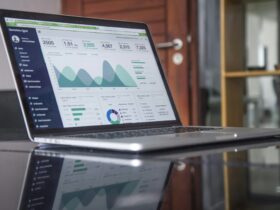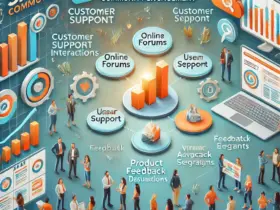
Most companies today turn to paid campaigns when they wish to grow. Paid traffic improves organic rankings, although many people still believe the two are unrelated. Search engines claim the two aren’t linked, but people who run a paid ad see an indirect boost in their organic rankings. How are the two connected?
Engagement Metrics
Ads direct visitors to a company’s website. Search engines may not consider this traffic when evaluating a site, but they pay attention to what a visitor does once they arrive. Visitors who take the time to explore the site send a signal to search engines that the information they are viewing is valuable and relevant. Search engines then give the site a quality boost. Many people believe that is how ads influence search performance, so they must have engaging content to keep people interested. However, that is only part of the equation.
Brand Impressions
Brand impressions make up the second part of the equation. A person might not click on the ad when they first see it. If they are looking for something specific and don’t want to get distracted, they will see the brand name and recognize its relevance to them. However, they need to complete what they are doing. When they see the brand in other organic searches, they understand they have seen it before. If they later search for the specific brand, the search engines view that as a sign that the brand is credible.
Paid ads don’t directly increase a website’s organic search engine ranking. They create signals that search engine algorithms recognize and use when ranking a site. The search engine algorithms then rank the site higher.
Incorporating Paid Aids into the Search Engine Optimization Strategy
Running ads can reduce the time needed to improve a site’s organic ranking. The ads don’t eliminate the need for search engine optimization, but they fill a gap until the optimization efforts show results. Some websites find that any gains they make from using paid ads disappear when the ads stop. For this reason, a business must use this strategy intentionally.
Paid ads should be used for permanent pages. These pages must be designed to provide long-term value. When they do, the engagement metrics will remain strong once the ads end.
Market Demand
Many business owners use paid ads to test market demand. They choose a product or service to test and create an ad targeting general searches related to similar products or services. The business owner then makes a headline that will capture the attention of target audience members. If the click-through rate for this ad is high, they move forward with creating the product or service they have in mind.
The Halo Effect
Temporary campaigns can have long-term effects. The engagement metrics and brand impressions may benefit the site for months or years. The entire domain benefits thanks to the halo effect.
When to Use Paid Ads to Boost Organic Rankings
Business owners must know when to utilize paid ads to enhance their organic rankings. High-value markets benefit greatly from paid ads because the potential ROI is good. Niche markets should consider running paid ads because the keywords are less competitive, so rankings improve in less time and at a lower cost. Any business may also use paid ads to launch a new page or product and establish engagement metrics.
Paid ads aren’t typically considered an SEO tool. When used correctly, however, they benefit organic rankings. Keep this in mind and incorporate paid ads into a larger SEO strategy for excellent results.





